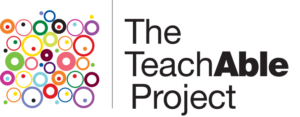We are committed to making our web site and its various content pieces fully accessible. Accessibility holds the key to equality for young people with disabilities, who, together with their immediate families, represent over 50% of our population.
We are committed to making our web site and its various content pieces fully inclusive and accessible for people with disabilities. Accessibility practices hold the key to equality for students with disabilities in educational settings and beyond. Students with disabilities experience a number of barriers including access to information, education, training, and employment.
Our web site meets WCAG2’s Level A compliance, as required by the Ontario’s AODA Information and Communication Standard of the Integrated Accessibility Regulations. We continue to add and improve this web site’s accessibility features with the goal of meeting or exceeding relevant Level AA and Level AAA requirements.
We believe that it is important for our students to see evidence, everywhere they turn, that the adults in their lives are doing everything in their power to make our society a welcoming, inclusive and accessible place for people with disabilities. This web site strives to be a model full for inclusion in its practices.
WCAG2 Practices
Specifically, we follow WCAG2 technical guidelines where applicable. These guidelines address:
Text Alternatives:
Provide text alternatives for any non-text content so that it can be changed into other forms people need. Examples include: large print, braille, speech, symbols or simpler language.
Time-based Media:
Provide alternatives for time-based media, such as video, audio, and animations. Examples of alternative content includes: captioning, video description, descriptive transcripts (for videos without audio) transcripts (for audio only media)
Adaptable:
Create content that can be presented in different ways (for example simpler layout) without losing information or structure.
Distinguishable:
Make it easier for users to see and hear content including separating foreground from background.
Keyboard Accessible:
Make all functionality available from a keyboard. For example: The user is able to fully navigate the web site only using a keyboard.
Enough Time:
Provide users enough time to read and use content.
Seizures:
Do not design content in a way that is known to cause seizures.
Navigable:
Provide ways to help users navigate, find content, and determine where they are.
Readable:
Make text content readable and understandable.
Predictable:
Make Web pages appear and operate in predictable ways.
Input Assistance:
Help users avoid and correct mistakes. For example: clearly identify missed fields, provide examples of required content.
Compatible:
Maximize compatibility with current and future user agents, including assistive technologies. For example: assure that all major platform screen readers work with site content, assure mobile web browsers and their accessibility features work correctly (adapted from www.w3.org/WAI/WCAG20/quickref/).
Resources and Recommendations that we follow include:
W3C WCAG2 Technical Guidelines and References
WebAIM’s WCAG2 Checklist
webaim.org/standards/wcag/checklist
WAVE Web Accessibility Evaluation Tool
Machine and User Validation
In addition to employing machine validation tools for web accessibility, users with disabilities employing assistive technologies are an active part of site validation testing.
Questions, Feedback, and Alternate Format Requests
If you are having problems accessing text, videos, or documents on this web site, or have specific alternative format requests, you can contact us.
